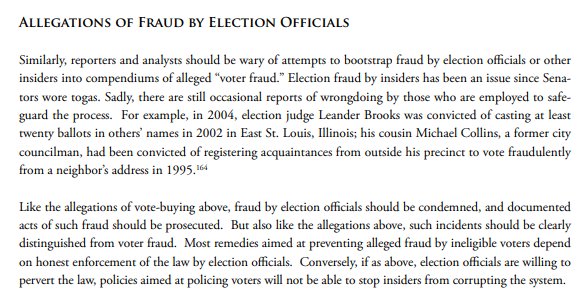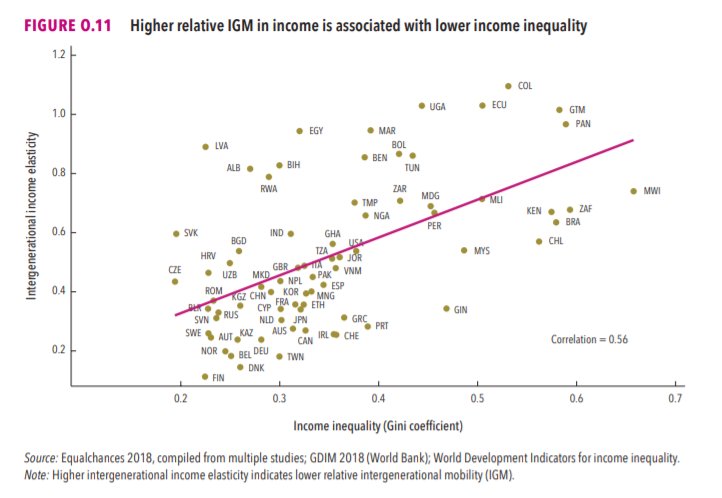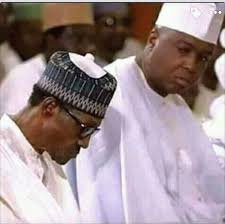1/
How many times have you seen a map like this? Do you take it at face value?
Here’s why maps like this one, published by @nytimes, might be lying to us all.
nytimes.com/interactive/20…
A typical, respectable reporting effort would carefully gather and tabulate all the data, then perform reviews to make sure that the dataset the maps are based on is reasonably accurate.
This means making sure all available data have a quality control review (did we receive good data?) and that there is adequate review of the data compilation (did we type it in right? Did we import the columns properly? etc)
A simplified example:
invensis.net/blog/data-proc…
We don’t know exactly what process was used to gather and summarize the election results data to create these maps by @nytimes, so for the sake of this thread, we’ll assume NYTimes did a fine job on data review and tabulation.
In fact, let's take go extreme and make a wildly unlikely assumption, to help make the point here:
Let’s assume the maps are based on a 100% perfect dataset . No typos, transpositions, reporting errors, etc. A unicorn.
Perfect data = perfect map, right?
Not necessarily.
There are multiple steps that happen before election results are plopped into data summary tables for each precinct. In a secure election, one of these steps is the casting of ballots into a fully documented, auditable system with a paper trail.
One vote per real, live, legally registered voter accurately counted, documented, verified, and tabulated with audits confirming tallies are correct.
In a compromised election, the final “votes” tallied up do not necessarily represent 100% real votes.
The final vote total and count of votes cast by party and candidate do not correspond to real people who actually voted at the polls. The final tallies are not real.
Election fraud happens many ways, e.g., maybe electronic voting machines are altered to flip votes or delete a percentage of votes for a candidate.
This Brennan Center pub debunks the voter fraud myth, but includes a section on election fraud:
brennancenter.org/publication/tr…

One of the most difficult methods of election fraud to discern:
Voter registration database manipulation
These databases may not be adequately secured. There may be points of failure. There may be ways data can be accessed and compromised during transfer, updates, etc.
What if voter registration databases were altered to add fake voters into a district, say by suddenly making inactive or deceased voters active again, or adding fake new registrations?
What if these fake voters, who obviously don’t vote IRL, then “justify” fake votes inserted at a point prior to the final tally?
What if these fake votes are calculated to just barely tip the scales for a GOP candidate?
If fake votes are falsely recorded as real votes in final election results,
➡️then fraudulent election results are tallied as numbers in databases and spreadsheets.
No matter how carefully the data summaries are reviewed, if they include fraudulent votes, they are bad.
Carefully reviewed bad data = carefully reviewed bad maps
You know, the ol' GIGO.
Garbage In = Garbage Out
I am not saying this happened in every precinct in every state.
I am saying we have a mountain of evidence available, even just to lay people, that indicates we should be worried as hell that this might have happened in multiple, specifically targeted states.
I am saying that what you are reading might not be what actually happened.
Maybe this map is what was recorded, but it might not represent real people casting real votes in all of these precincts.
America might be a lot more blue than this.
nytimes.com/interactive/20…
We know Russia successfully infiltrated voter registration databases in more than one state.
abcnews.go.com/US/russian-hac…
We know Russia may have manipulated voter registration data.
businessinsider.com/russian-hacker…
We know private citizens are so worried they spend months scouring voter registration databases and finding supremely weird and inexplicable changes in the data right before and after the 2016 election, corroborating possible fraudulent manipulation:
unhackthevote.com/our-research/v…
We know that lots of people believe Russia changed votes in the 2016 election and that subsequent special elections are tainted (s’up @ossoff). Millions of us are definitely not afraid to admit it.
theroot.com/evidence-shows…
It’s not just We the People who believe this. Former Presidents believe it too. To be clear, “some sort of paper ballot” system isn’t quite enough; it must include a robust paper trail with infallible audits.
businessinsider.com/bill-clinton-u…
Here's the DHS saying in 2017 "no one hacked votes", but, even more importantly,
"IT NEVER RAN AN AUDIT TO CHECK"
There is no way Putin made it past the goalie and didn't score.
thedailybeast.com/dhs-never-ran-…













